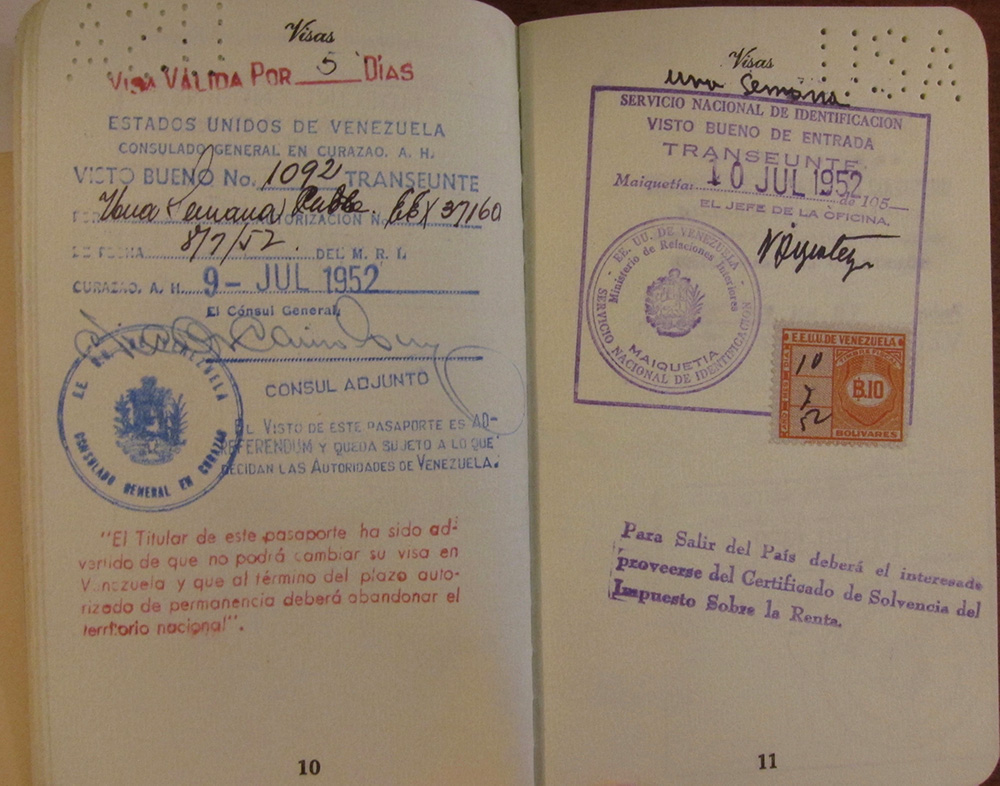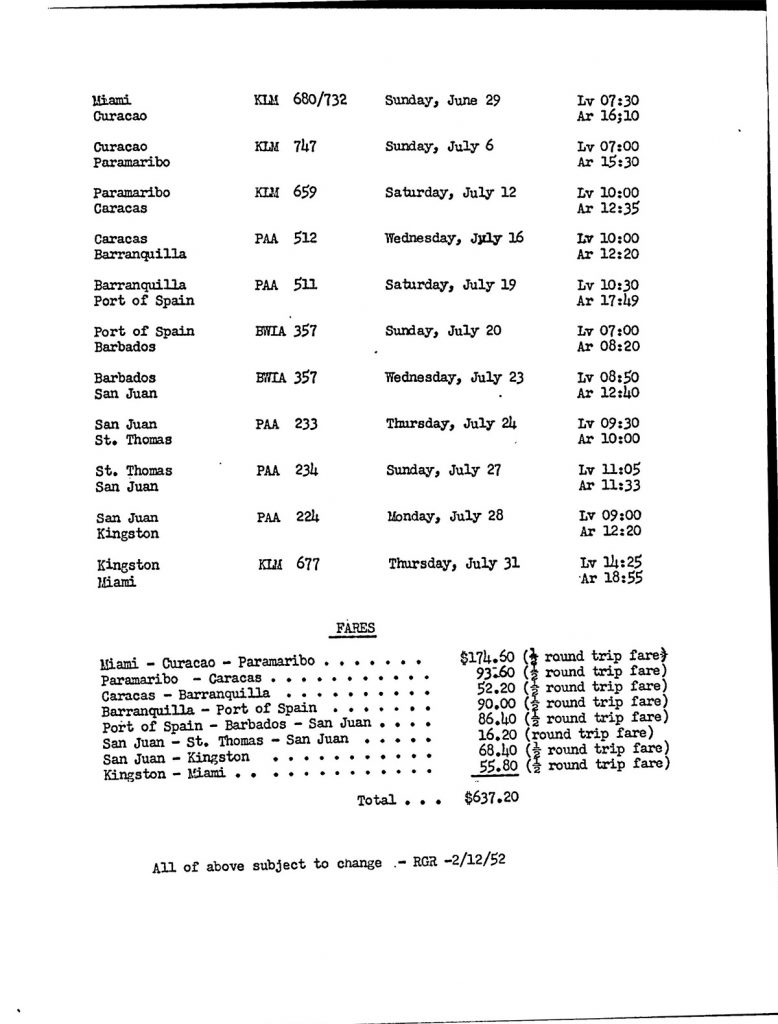The Jacob Rader Marcus Center of the American Jewish Archives (AJA) was established in 1947 by Jacob Rader Marcus, the longtime professor of Jewish history at Hebrew Union College in Cincinnati. Marcus, himself a Reform rabbi, had joined HUC’s faculty in 1920 following his ordination and remained there until 1995, when he passed away at the age of 99. Under Marcus’ leadership, the AJA became one of the premiere archival centers for the study of American Jewish history. Today, the AJA is led by Gary P. Zola.
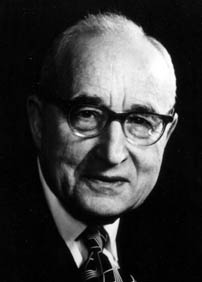
For Marcus, collecting material on American Jewish history was closely tied to his deep conviction that with the destruction of European Jewry, the American Jewish community had now become the world’s “greatest Jewry,” as he put it repeatedly. He himself had originally begun his career as a scholar of Medieval Jewish history, and was now convinced that it was important to study Jewish life not as a “post-mortem autopsy,” but to focus on a vital community while it was still living. Marcus’ archives was thus a powerful statement about the nature of American Jewish life, and also about the place of Cincinnati within it.
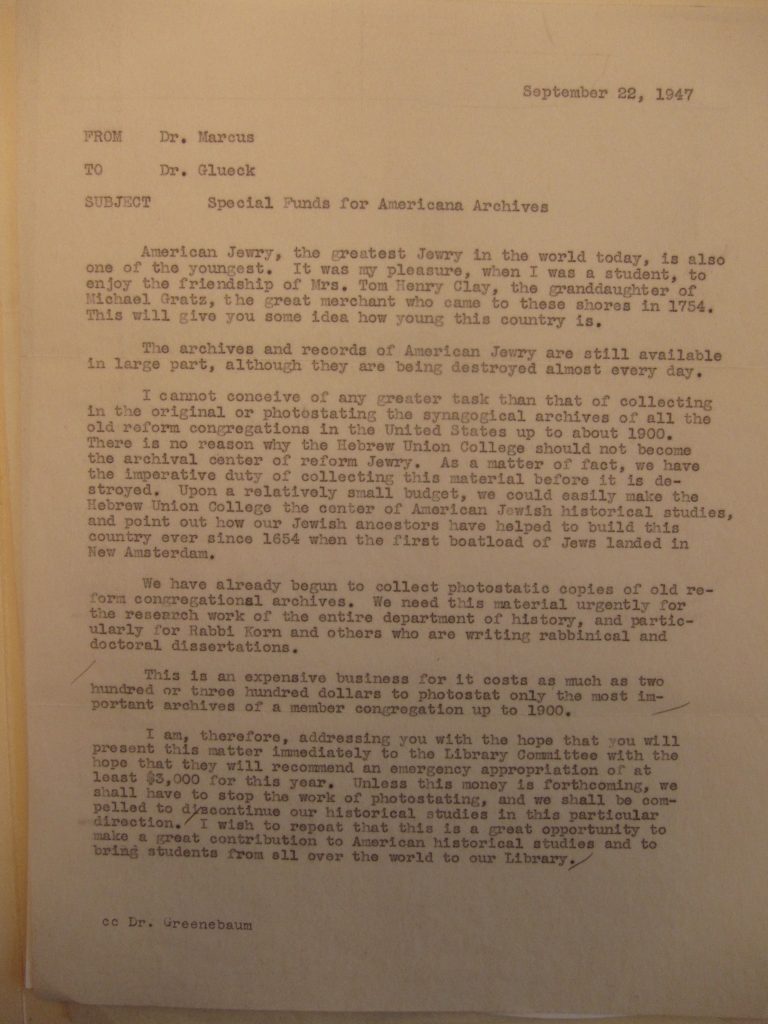
The AJA’s initial collections were closely tied to Marcus’ personal scholarly interests in American Jewish history. In fact, he began collecting historical materials for his research on American Jewry and for his students’ theses as early as 1934. When he formed the AJA in 1947, Marcus first began collecting the files and minute-books of American synagogues, as well as the files of Reform rabbis who had been his schoolmates, friends, and students. He gathered large “nearprint” files, including ephemera, photographs, and newspaper clippings.
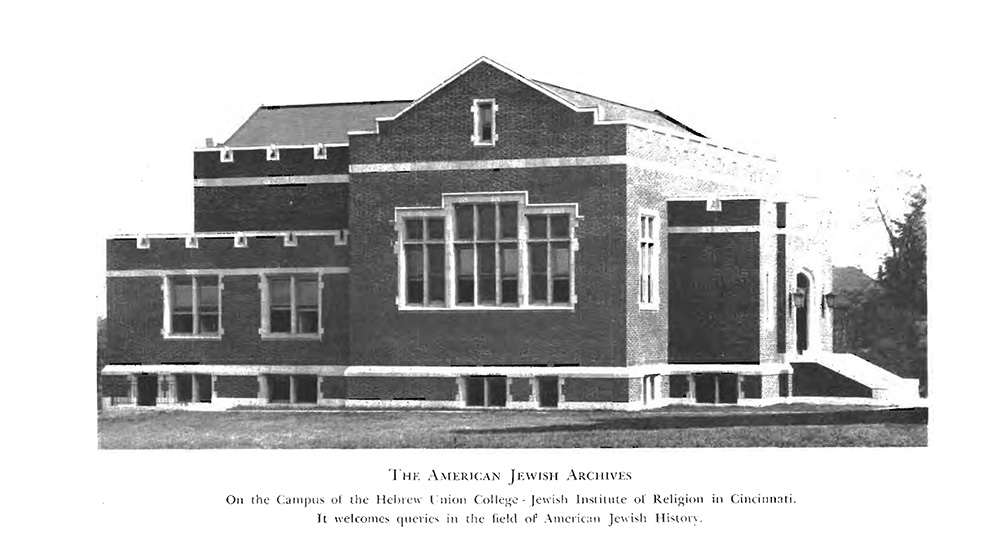
The AJA’s collections, however, are not restricted to Reform Jewry. Marcus’ early collecting also centered on Jewish life outside the United States. In 1951, he set out on an expedition to gather historical materials on Jewish life in the Caribbean and South America, where there were the earliest Jewish settlements in the Western Hemisphere. These efforts reflected Marcus’ conception of American Jewish history on its largest geographical scale.
The AJA collaborated closely with the American Jewish Historical Society, of which Marcus was also a board member and eventually president. The two groups shared microfilm copies of archival materials, which reflected Marcus’ interest in the data contained in documents rather than holding physical materials themselves—a kind of “cult of the copy.”
The American Jewish Archives also publishes The American Jewish Archives Journal, which includes both research articles and critical editions of primary sources.
Major groups of collections include (this is not an exhaustive list but a general overview of some major areas) files of rabbis and other leading American Jewish figures; files of B’nai B’rith lodges and chapters; synagogue records; materials relating to the history of Hebrew Union College, the Jewish Institute of Religion, and Reform Judaism; the files of the World Jewish Congress.
In addition, the American Jewish Archives holds the records of the American Jewish Periodical Center, Marcus’ effort to create a complete archive of American Jewish periodicals and newspapers. These files as well as a number of other collections have been microfilmed and are available at HUC libraries in Jerusalem, New York, and Los Angeles.
You can read more about the American Jewish Archives and its history in chapter 3 of A Time to Gather: Archives and the Control of Jewish Culture, “An Archive of Diaspora at the ‘Jerusalem on the Ohio.’”
Research Details
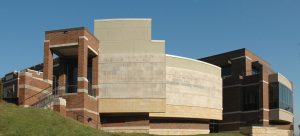
The Jacob Rader Marcus Center of the American Jewish Archives can be visited at the Barrows-Loebelson Family Reading Room, on the grounds of the Hebrew Union College–Jewish Institute of Religion campus in Cincinnati, Ohio. The reading room is adjacent to the main Klau library, immediately next to the main parking lot of the campus and prominently visible from Clifton Ave.
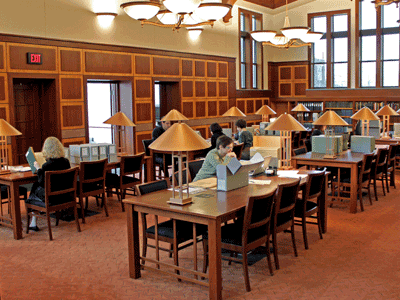
Visitors are asked to deposit their bags in lockers outside the reading room. Researchers can order files and boxes, which are delivered to the reading room. The AJA has a liberal policy towards photographing archival materials, for which they do not charge. They do charge for scanning certain materials.
The AJA has a robust fellowship program that supports scholars to conduct their research.
Collections are generally labeled MS-xx (manuscript collection), SC-yy (small collection), PC-zz (picture collection), and nearprint (usually tied to a specific manuscript collection).
The American Jewish Archives’ extensive finding aids are available online, and they also have a useful search function. They also have made available digitized resources such as Isaac Mayer Wise’s journal The American Israelite.
Further Reading
- Jason Lustig, A Time to Gather: Archives and the Control of Jewish Culture (Oxford University Press, 2021), chapter 3.
- “The Program of the American Jewish Archives.” American Jewish Archives Journal 1, no. 1 (1948): 2–5.
- Frederic Krome. “The Burdman-Levy Archival Expedition of 1962 to Europe.” American Jewish Archives Journal 55, no. 2 (2003): 32–35.
- Jacob Rader Marcus. “The West India and South America Expedition of the American Jewish Archives.” American Jewish Archives Journal 5, no. 1 (January 1953): 5–21.
- Kevin Proffitt. “The Micrographics Program of the American Jewish Archives.” Microfilm Review 15, no. 2 (1986): 87–90.
